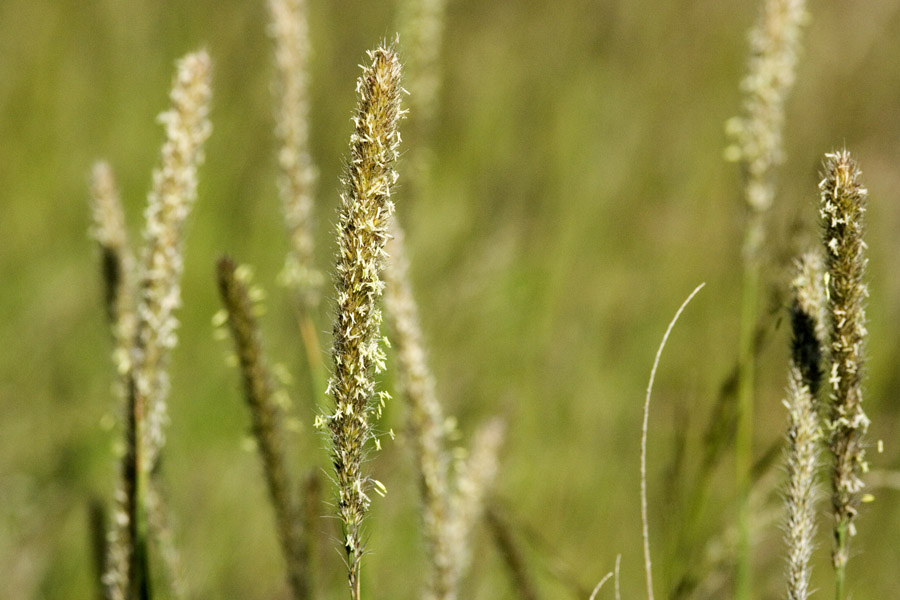Lycurus
|
Family: Poaceae |
Plants perennial; cespitose. Culms 10-60 cm, erect to somewhat decumbent, usually branched. Sheaths open, compressed-keeled, glabrous, smooth or scabridulous, mostly shorter than the internodes, a 2-veined prophyllum often present; ligules hyaline, strongly decurrent, truncate or rounded to elongate and acuminate, sometimes with narrow triangular lobes extending from the edges of the sheath on either side; blades folded or flat, rather stiff, with prominent, firm, scabrous margins, midveins sometimes extending as short mucros or fragile, scabrous, awnlike apices. Inflorescences terminal and axillary, dense, bristly, spikelike panicles; branches short, fused to the rachis, terminating in a pair of unequally pedicellate spikelets or a pedicellate spikelet and a short secondary branch with two spikelets, occasionally in a solitary spikelet, usually the lower spikelet in a pair staminate or sterile and the upper spikelet bisexual, sometimes vice versa, or both spikelets bisexual; disarticulation at the fused base of the pedicels or pedicel and branch, paired spikelets falling as a unit, leaving a cuplike tip. Spikelets with 1 floret. Glumes subequal, awned; lower glumes with (1)2(3) awns, usually unequal, awns commonly longer than the body; upper glumes 1-veined, with a single flexuous awn that is usually longer than the glume body, rarely a finer second awn present; lemmas lanceolate, 3-veined, pubescent on the margins, mostly glabrous over the back, tapering to a scabrous awn that is usually shorter than the lemma body; paleas about equal to the lemmas, acute or occasionally the 2 veins extending as very short mucros, pubescent between the veins and on the sides, except for the narrow, glabrous, hyaline margins; anthers 3. Caryopses fusiform, brownish. x = 10. Name from the Greek lykos, wolf, and oura, tail, an allusion to the spikelike inflorescences. |

